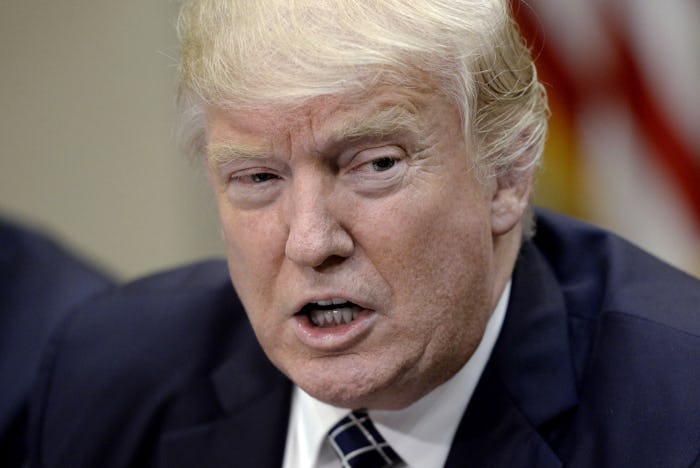On Wednesday, Politico reported that President Donald Trump may be poised to sign an executive order that would start the process of withdrawing the United States from a longstanding trade agreement with its two closest neighbors. It's an unsurprising development considering Trump's "America First" mentality and his well-documented opinion that the North American Free Trade Agreement (NAFTA) is costing the country economically. But in order to parse out whether that's true, it's important to examine what exactly NAFTA is and whether the Trump administration truly intends to leave it behind for good.
Implemented under President Bill Clinton in 1994, NAFTA encourages an easy exchange of goods and services among the United States, Canada, and Mexico by doing away with tariffs on traded goods among North America's three largest nations. Trump has consistently blasted the deal as a job killer, and vowed as a candidate to renegotiate its terms. Now, unnamed White House officials have confirmed that the president's executive order — which could change before it's signed — would open the door for the renegotiation of the deal, as well as leave open the possibility of an eventual full American exit from its terms and conditions.
And setting this chain of events into motion so soon before his administration turns 100 days old April 29 would be no coincidence. That's because it would serve as a touchstone to which the administration could point to claim progress, in spite of a decidedly unimpressive start to the presidency.
Trump's signing of the executive order would launch the 90-day consultation period required before actual renegotiation talks with Canada and Mexico could occur, according to CNN. Commerce Secretary Wilbur Ross said Tuesday that the White House has not yet done so because Trump's pick for U.S. Trade Representative, Robert Lighthizer, has not yet received a full Senate confirmation, according to CNN.
But what would it mean if Trump opted to actually withdraw the United States from NAFTA? An October 2015 report from the U.S. Chamber of Commerce concluded that NAFTA has had a positive effect on the United States. For example, almost 14 million American jobs rely on trade with Mexico and Canada, and those countries together purchase one-third of the United States' merchandise exports. One of Trump's main issues with the agreement, though, is that it does make it easier for American manufacturers to move jobs to to Mexico. But Fortune's Stephen Gandel points out that these jobs may have shifted to Mexico regardless of whether or not the United States took part in NAFTA back in 1994.
According to the Office of the United States Trade Representative, either Canada or Mexico is the first or second largest export market for more than 30 states in the United States. There's support for the deal among members of both political parties, as it was drafted under Republican President George H.W. Bush, and former Democratic presidential candidate Hillary Clinton backed it. In fact, Republican Sen. John McCain told CNN that the United States' withdrawal from NAFTA would "devastate" the economy in his state of Arizona.
Despite his tough rhetoric on the topic (and a recent politicization of a decades-long trade dispute over lumber with Canada), Trump does not appear to have fully made up his mind as to what to do about NAFTA. The Washington Post reported Wednesday that signing the executive order would make it possible for Trump to leave the deal eventually, but not signal unequivocally that he plans to do so. What's more, it's also expected that the White House will soon alert lawmakers in Congress that it wants to renegotiate NAFTA. These are two distinct moves that show that Trump and his people are leaving themselves some wiggle room as they proceed forward.
